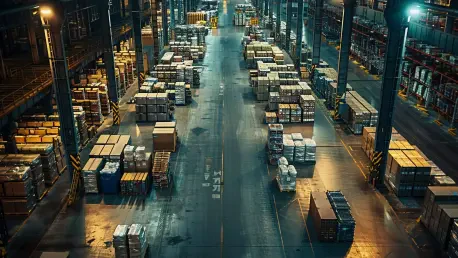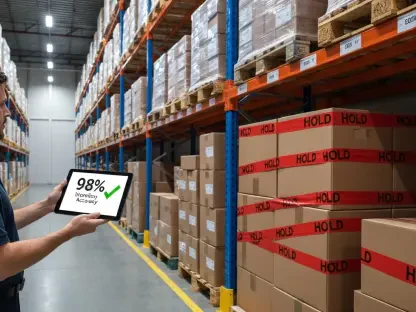In a bold stride toward redefining the publishing industry’s supply chain dynamics, a leading global publisher has announced an ambitious plan to establish a cutting-edge, 1.6 million-square-foot automated logistics facility in Brownsburg, Indiana, signaling a transformative step for the company. This monumental project aims to bolster efficiency, speed, and direct oversight of its North American distribution network. With construction set to commence later this year and an anticipated opening in 2028, the facility is poised to handle an extraordinary capacity of over 300 million books annually. Such a significant investment in automation and technology not only highlights the publisher’s commitment to staying ahead in a competitive market but also reflects a broader industry shift toward modernization. This development promises to reshape how books are distributed across the continent, sparking curiosity about how traditional sectors can leverage innovation to meet contemporary demands.
Revolutionizing Supply Chain with Advanced Technology
The core of this Indiana initiative lies in the adoption of state-of-the-art technology to streamline supply chain operations. The new hub will feature sophisticated goods-to-person systems, which efficiently transport products directly to workers, minimizing manual labor and significantly boosting productivity. Specialized packaging equipment will also be integrated to reduce waste from cartons and other materials, aligning with sustainability goals that are increasingly vital in today’s industrial landscape. Collaborations with top material handling suppliers ensure that the best automation solutions are implemented, complemented by advanced warehouse management systems, labor management systems, and yard management systems. This technological overhaul is designed to create a seamless, efficient workflow, setting a new standard for logistics in the publishing sector and demonstrating how innovation can address long-standing operational challenges with precision and foresight.
Drawing inspiration from a recently established distribution center in Glasgow, Scotland, the Indiana facility represents a global approach to refining logistics strategies. The insights gained from international operations have informed the design and functionality of this hub, ensuring that it incorporates proven methods tailored to local needs. Beyond automation, the focus on reducing environmental impact through waste-minimizing equipment showcases a commitment to responsible practices that resonate with modern consumers and stakeholders. The integration of multiple management systems further enhances operational control, allowing for real-time tracking and optimization of resources. This comprehensive technological framework not only promises to elevate the publisher’s distribution capabilities but also positions the facility as a benchmark for others in the industry aiming to balance efficiency with ecological mindfulness in an era of heightened environmental awareness.
Shifting to In-House Logistics Control
A pivotal aspect of this project is the transition from outsourced distribution to full in-house management, marking a significant strategic shift. For over a decade, the company has depended on third-party providers, consolidating operations from multiple warehouses into a single location. The opening of the Indiana hub will enable complete control over logistics, eliminating reliance on external partners and enhancing visibility across the supply chain. This move aligns with an industry-wide trend toward self-reliance, where companies prioritize direct oversight to ensure reliability and responsiveness to fluctuating market demands. By bringing operations in-house, the publisher aims to mitigate risks associated with outsourcing, such as delays or miscommunications, and to build a more agile framework capable of adapting to the fast-paced nature of the publishing world with greater confidence.
This shift also underscores a deeper commitment to operational independence and long-term stability. Regaining control over logistics allows for tailored solutions that specifically address the unique challenges faced by the company, from inventory management to delivery timelines. The decision to move away from third-party dependence reflects a calculated effort to strengthen supply chain resilience, especially in an era where disruptions can have far-reaching impacts. Moreover, this transition facilitates a closer alignment between production and distribution, ensuring that customer expectations are met with precision. The Indiana facility, as a cornerstone of this strategy, will serve as a model for how traditional industries can reclaim autonomy over critical operations, paving the way for enhanced accountability and a more robust response to the evolving needs of readers and retailers across North America.
Economic Impact and Future Outlook
Economically, the establishment of this massive facility is set to make a substantial impact on the Brownsburg community and beyond. With plans to create over 400 supply chain logistics jobs, the project will provide a significant boost to local employment, fostering economic growth in the region. This influx of opportunities positions the publisher as a key contributor to the area’s economy, reinforcing its role as a socially responsible corporate entity. The scale of the hub, combined with its projected output, also suggests a strong anticipation of sustained demand for physical books, even amidst the growing prevalence of digital formats. Such confidence in the enduring appeal of tangible reading materials highlights a nuanced understanding of market trends and consumer preferences in a rapidly digitizing world.
Looking ahead, this initiative reflects broader industry currents that emphasize automation and operational self-sufficiency as critical drivers of competitive advantage. The capacity to ship over 300 million books annually from the Indiana hub underscores its importance as a linchpin of North American operations. This strategic investment not only addresses current supply chain challenges but also prepares the company for future growth and scalability. The focus on sustainability and job creation further enhances the project’s significance, demonstrating how industrial advancements can coexist with community benefits. As the facility takes shape in the planning stages, it sets a precedent for how traditional sectors adapt to modern logistical demands, offering a blueprint for balancing innovation with economic and environmental responsibility in the years to come.









